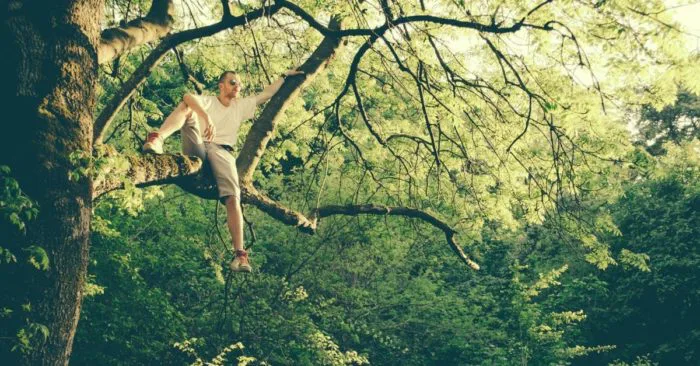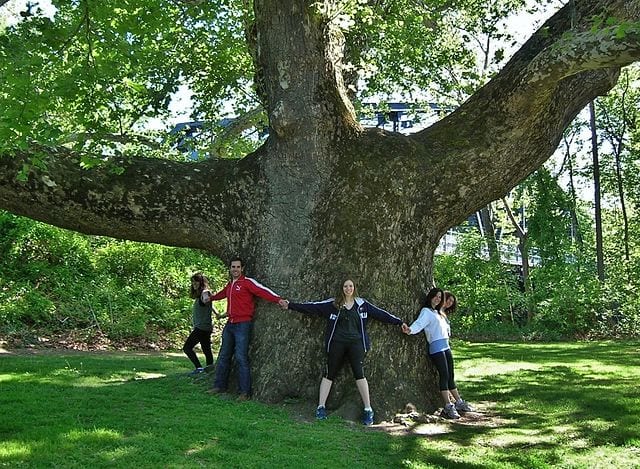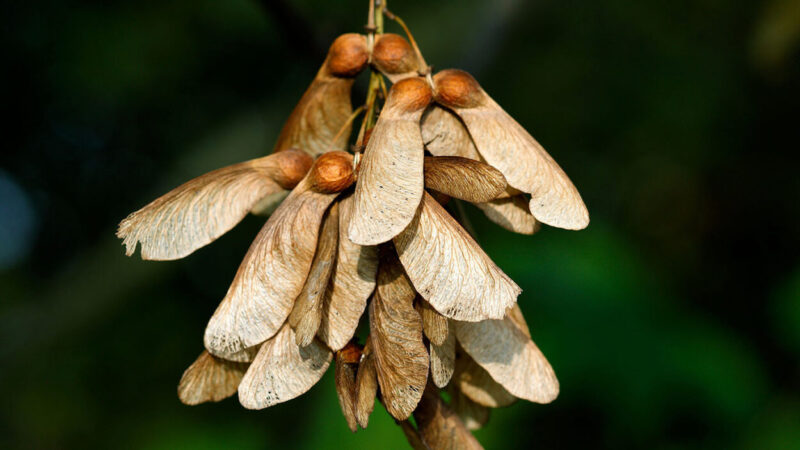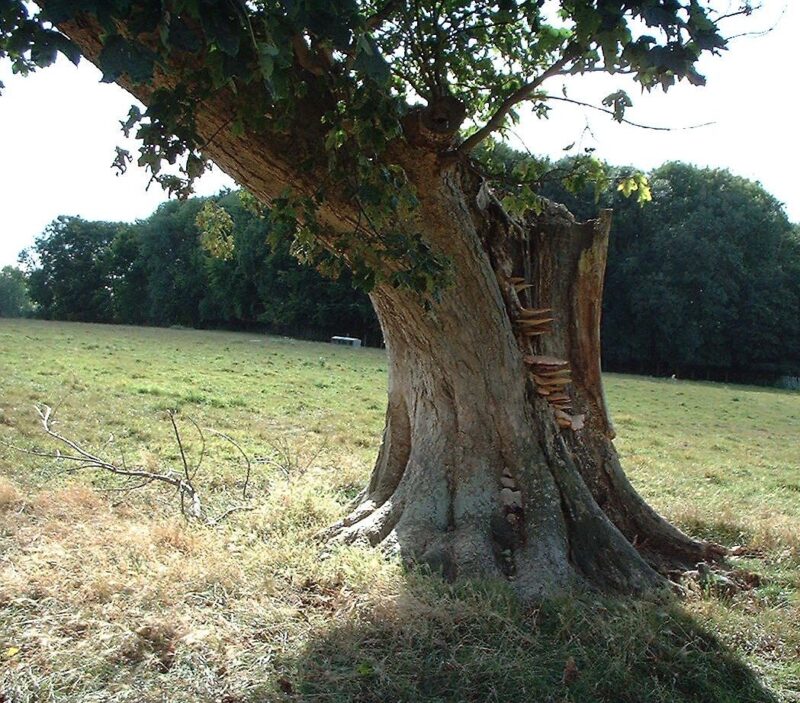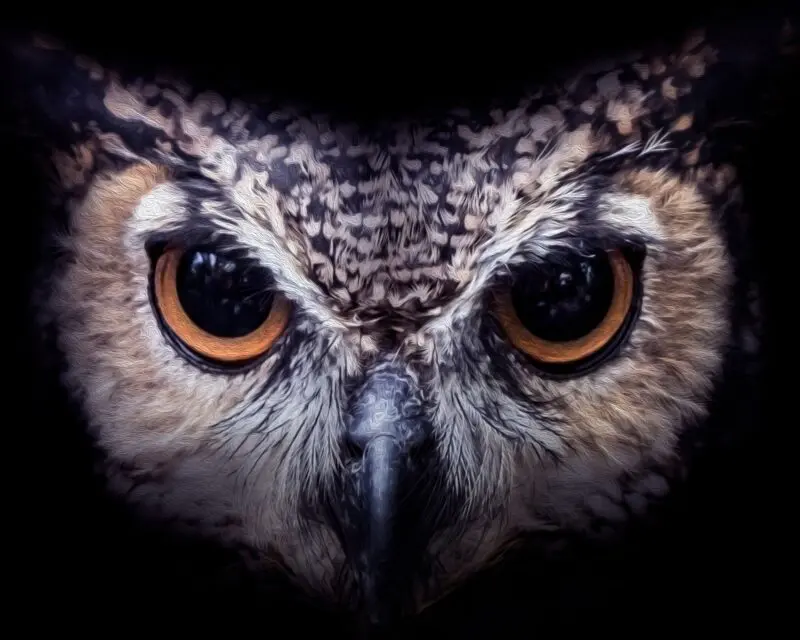Sycamore tree symbolism originates in Egypt and the Middle East.
However, with the rise of Christianity in the western world and the tree’s introduction to Europe either by the Romans or the Crusaders, a rich set of meanings has arisen around the world.
The primary symbolism surrounding the Sycamore relates to love, protection, and fertility.
It has strong links to nature and the elemental forces, especially resistance against the more destructive ones.
About The Sycamore Tree
The Sycamore is a deciduous tree with maple-like leaves and pink-brown wood. They live up to 400 years but take a particularly long time to reach maturity.
Before maturity, they have smooth trunks, remaining supple and adaptable until fully grown.
At the point of maturity, the trunk begins to form scales and turns to a more greyish color.
They are renowned for their ability to withstand punishment.
They are particularly resistant to strong winds, resulting in their appearance along coastlines and in the Scottish Highlands due to their ability to remain standing where others would fall.
Although they were rare in Europe before the middle ages, at some point they were brought over from the Arab Peninsular and shortly spread across the whole continent.
Their hardiness, fertility, and ability to grow in high salt soils helped them to spread like wildfire.
Today they are often planted along coasts as windbreakers and as street trees.
The reason they are so popular in today’s age of environmentalism is that they are particularly adept at absorbing and breaking down pollutants in the air.
Finally, the wood of the Sycamore has long been used for crafting and carving.
The fine grain and beautiful coloring are highly appealing to woodcrafters and carpenters, with an especially long tradition in the Welsh valleys.
Symbol Of Protection
The Sycamore has always been considered a symbol of protection, even from the earliest mentions in human history.
Perhaps the first famous appearance of this tree is in the Bible.
Mary and Joseph are said to have sought protection from the elements under the cover of a Sycamore.
This theme is echoed in many writings from around the time, suggesting that it was a well-known symbolic meaning of this tree.
This was far from the last time it would be touted as a symbol of protection.
As far back as the 1600s, the people of the Scottish Highlands were planting Sycamore’s in areas that were particularly vulnerable to the wind.
As gusts can reach dizzying speeds through the valleys and mountainous regions – not to mention by the coast – it was an important step for local townspeople to protect their way of life with natural windbreakers.
There are similar stories from Wales and the east coast of England, as well as across Italy and southern France.
More recently, a famous Sycamore was responsible for the protection of St Paul’s Cathedral in New York on September 11, 2001.
After the attacks on the World Trade Center the towers fell and littered the surrounding city blocks with burning debris.
The large Sycamore that stood outside of the cathedral did not survive the initial blast, but it did block a serious amount of damage that would have been done to the building.
As a consequence, the cathedral was able to be used as a refuge for survivors, on whom the Sycamore tree symbolism of protection was surely not lost.
Symbol Of Love
Gifts have long been a part of dating. Today you might present jewelry or flowers to the person you are courting.
In Wales, during the middle ages, you would present them with a “Love Spoon”.
These were crafted from the wood of the Sycamore tree, favored as it was by woodcarvers and artisans.
Ornately decorated with symbols of love and nature, you would present a romantic prospect with a Love Spoon in order to signal your intent and woo them.
This practice likely stems from the Sycamore’s association with fertility and the interesting way it reproduces.
Many people will remember playing with the “helicopters” from Sycamore trees – the winged seeds that spin gently to the ground as they drop from the tree’s branches.
Although they have gone by many names before, they have always been a source of entertainment for children.
There is always a tendency for the joys of childhood to play a symbolic part of the transition to adulthood represented by romance.
The playfulness and innocence of youth may have influenced the choice of the Sycamore for the carving of Love Spoons.
For the tree, it is an incredibly effective way of reproducing.
The seeds can travel miles in high winds, which is of course where the trees dominate most of the landscape.
It is likely this link with fertility contributed to the practice, too.
Symbol Of Resilience
The reason this tree matures so slowly is adaptability.
We have already talked about how these trees can survive everything that nature throws at them, and this has become a symbol of resilience in the face of natural forces.
The most dangerous natural forces for trees are often the weather, especially extreme events.
While these are dangerous for us too, there are more pressing dangers for us.
For this reason, the Sycamore tree symbolism gained a reputation as a symbol of resilience against diseases – both physical and mental.
Its bark has varyingly been used in teas and brews to treat a variety of ailments, and the branches have often been used to “ward off the evil spirits that bring temptation into the minds of men”.
That may have been the driving force behind the introduction of this tree to Europe if it was done by the Crusaders.
This is backed up by the number of them found in churchyards dating back to the middle ages.
Whatever the case may be, this tree has held symbolic meaning for many people for centuries.
As more and more are planted to help tackle pollution in major cities, perhaps this sacred symbol of protection can help protect Mother Earth from those that do it harm.
FAQ
Q: How big do Sycamore trees get?
A: Sycamore trees can grow to be quite large, with some specimens reaching up to 30 to 100 feet in height. The average tree, however, is usually between 15 and 20 meters tall.
Q: What is the Sycamore tree’s lifespan?
A: The Sycamore tree can live for a very long time, with some trees lasting well over 400 years. The average lifespan, however, is between 100 and 150 years.
Q: Where do Sycamore trees grow?
A: Sycamore trees are native to Europe, Asia, and northern Africa. In recent centuries, they have been introduced to North and South America, Australia, and New Zealand.
Q: What do Sycamore trees look like?
A: Sycamore trees have a characteristic bark that is light brown or gray in color and is marked with dark streaks.
The leaves are large and palmate, with 5-7 lobes. The tree produces winged seeds that are dispersed by the wind.

